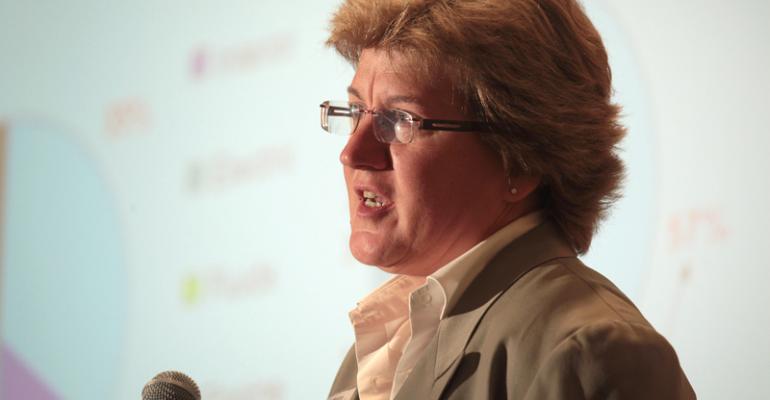DEARBORN, MI – Auto makers looking to take weight out of the vehicle to meet looming government-mandated fuel-economy regulations should look to new technological innovations in vehicle interiors, industry experts say at the 2013 WardsAuto Interiors Conference here.
Utilizing new advanced materials is one way to shave weight, but it’s imperative that the new materials are as safe, durable and cost-efficient as the ones they replace, says Robert Eller, president of consultancy Robert Eller Associates.
Eller says one technology that shows promise is so-called “smart” textiles that can be used to replace heavier componentry. Textiles that can automatically heat and cool themselves, for example, could replace thermo-conductive layers auto makers now install in seats to provide the same functions.
Another possible smart-textile application would detect weight, allowing the vehicle’s control system to automatically enable airbags if it senses an occupant in the passenger’s seat. Today’s vehicles provide that function via heavy, complicated sensors.
Douglas Stratton, business development manager-Bayer, says his company has developed a center-stack concept to demonstrate technologies that could drive weight out of a vehicle, including circuitry that can be printed directly onto surfaces.
“The auto industry is embracing this, and we’re seeing interest, but there are a lot of challenges and hurdles,” he says. “But there are benefits, including compact design, weight reduction and a slim profile and accelerated (electronic) signals.”
Bayer also has developed a polycarbonate film that can replace screens currently used for infotainment and navigation-system displays, he says. Not only is the film thinner and lighter than traditional screen materials, it also produces less glare.
The center-stack concept and polycarbonate film “send a signal to the industry about the capabilities about what’s feasible,” Stratton says. “We’d like it to be source of inspiration for designers.”
Rose Ryntz, senior director-advanced engineering, International Automotive Components, says a 10% vehicle-weight reduction results in a 6%-7% increase in fuel economy. To meet 2025 corporate average fuel economy regulations, a vehicle weighing 3,700 lbs. (1,678 kg) would need to shave 225 lbs. (102 kg) off its curb weight.
Meeting CAFE regulations is “drastically affecting types of materials and processes that can be used” by auto makers, she says. OEMs must look at all areas to trim weight, including the insulating material used between the firewall and engine. IAC has developed a foil that can be sprayed on in select areas.
“It offers overall decreased weight and lower cost,” Ryntz says. “Compared to injection-molded barriers, it allows you to spray on abatement technology where you like.”
There are areas outside interiors that auto makers also must address for weight savings, including powertrains, she says. Diesel and turbocharged engines are popular among auto makers for their fuel-saving benefits, but the technologies add weight to a vehicle, largely negating the efficiencies they provide.
Hybrid-electric powertrains pose the same problems, she says, noting they are “more fuel-efficient but add 9% to total vehicle weight.”





